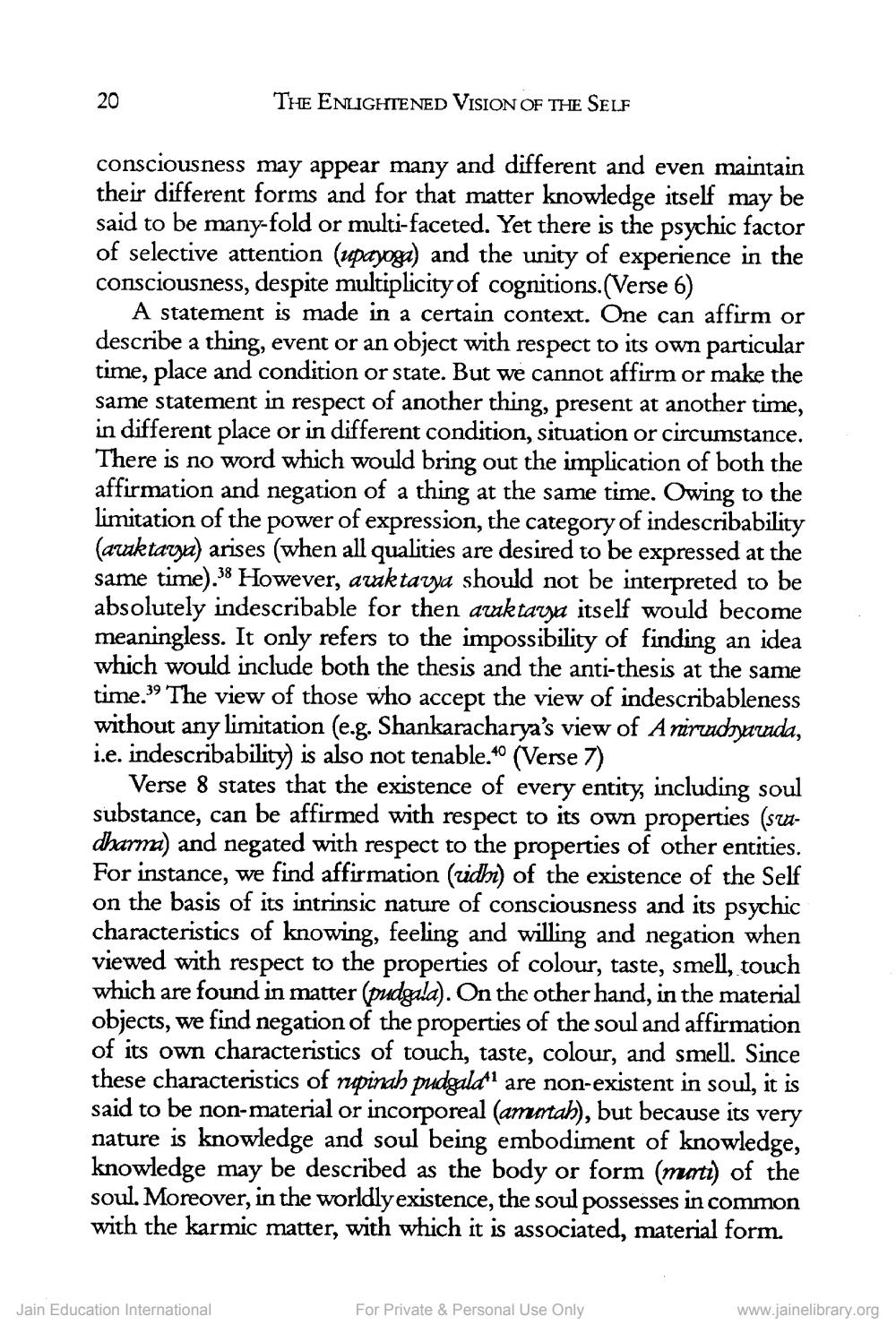________________
20
THE ENLIGHTENED VISION OF THE SELF
consciousness may appear many and different and even maintain their different forms and for that matter knowledge itself may be said to be many-fold or multi-faceted. Yet there is the psychic factor of selective attention (upayoga) and the unity of experience in the consciousness, despite multiplicity of cognitions. (Verse 6)
A statement is made in a certain context. One can affirm or describe a thing, event or an object with respect to its own particular time, place and condition or state. But we cannot affirm or make the same statement in respect of another thing, present at another time, in different place or in different condition, situation or circumstance. There is no word which would bring out the implication of both the affirmation and negation of a thing at the same time. Owing to the limitation of the power of expression, the category of indescribability (araktarza) arises (when all qualities are desired to be expressed at the same time). 38 However, awaktazya should not be interpreted to be absolutely indescribable for then araktarja itself would become meaningless. It only refers to the impossibility of finding an idea which would include both the thesis and the anti-thesis at the same time.39 The view of those who accept the view of indescribableness without any limitation (e.g. Shankaracharya's view of Anirindyarada, i.e. indescribability) is also not tenable.40 (Verse 7)
Verse 8 states that the existence of every entity, including soul substance, can be affirmed with respect to its own properties (szadharma) and negated with respect to the properties of other entities. For instance, we find affirmation (uidh) of the existence of the Self on the basis of its intrinsic nature of consciousness and its psychic characteristics of knowing, feeling and willing and negation when viewed with respect to the properties of colour, taste, smell, touch which are found in matter (pudgala). On the other hand, in the material objects, we find negation of the properties of the soul and affirmation of its own characteristics of touch, taste, colour, and smell. Since these characteristics of rupinah pudgaldal are non-existent in soul, it is said to be non-material or incorporeal (ametah), but because its very nature is knowledge and soul being embodiment of knowledge, knowledge may be described as the body or form (muti) of the soul. Moreover, in the worldly existence, the soul possesses in common with the karmic matter, with which it is associated, material form.
Jain Education International
For Private & Personal Use Only
www.jainelibrary.org




